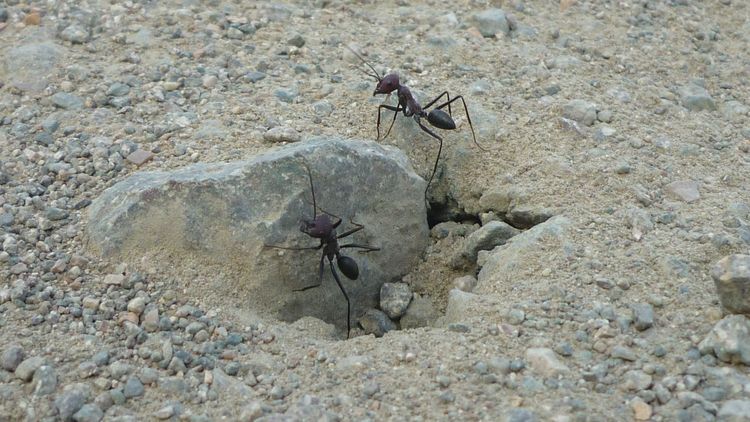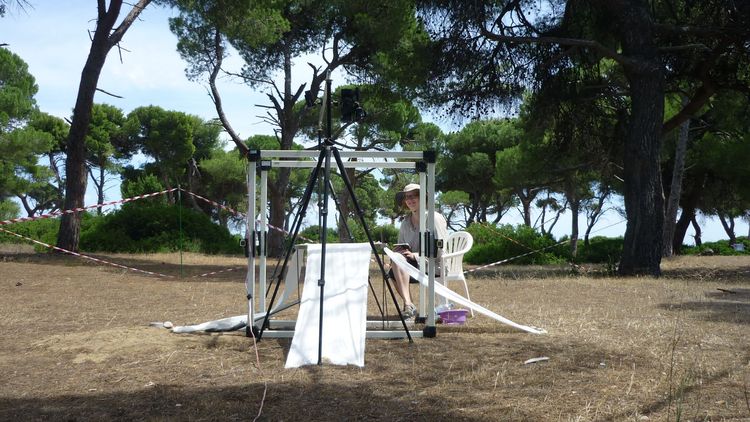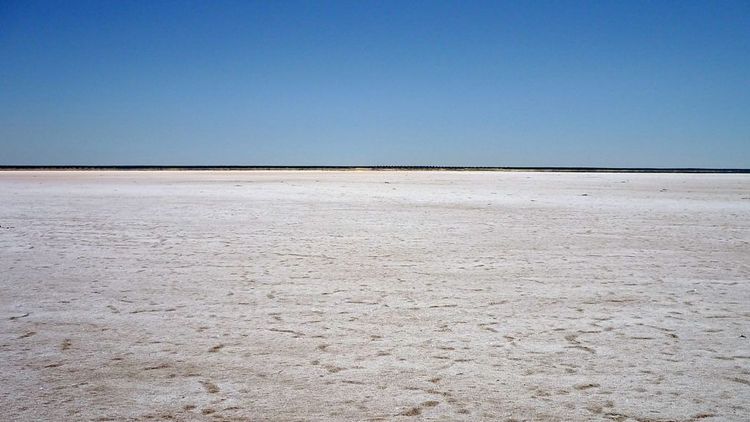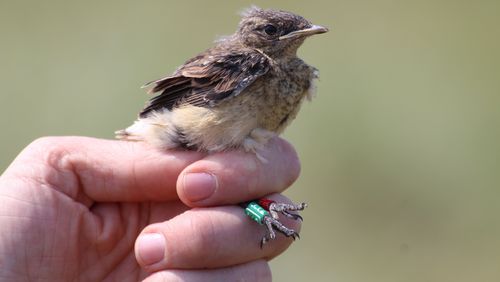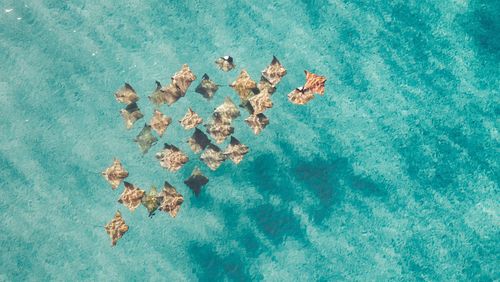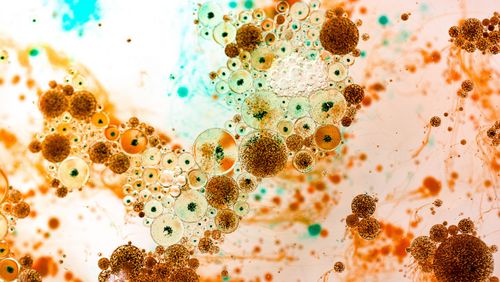Biologist Pauline Fleischmann researches desert ants and astonishing navigational abilities – both in the laboratory and in their natural environment. The insects are surprisingly good at orientating themselves in monotonous terrain.
Pauline Fleischmann puts her hand out very carefully and lets an ant crawl onto it. “They don’t do anything, they’re completely harmless," the biologist says with a smile as one of her six-legged, approximately one-centimetre-long research subjects scuttles across the back of her hand. Desert ants of the Cataglyphis genus don’t sting and nor do they release acid or toxins. “They don’t stand a chance if they encounter an enemy in the wild,” says Fleischmann. In their natural habitat – the salt pans in the North African Sahara or the pine forests of Greece, for instance, the ants only leave their underground nests at the hottest time of the day when no potential predators are out and about.
Fleischmann, who studied the behaviour of desert ants during her PhD and postdoctoral research at the University of Würzburg, moved to the University of Oldenburg in the summer of 2022 to take up a position as a Research Group Fellow in the Collaborative Research Centre (CRC) 1372 “Magnetoreception and Navigation of Vertebrates”. Before her arrival, the CRC was focused on magnetoreception and migration in birds, fish and bats, but with Fleischmann’s input its perspective has broadened to encompass invertebrates.
Fleischmann brought two colonies of desert ants back to Germany with her from Greece. The insects live inside two grey plastic boxes in a small, air-conditioned room in Building W04. Open the lid and you see hundreds of the tiny six-legged creatures scurrying back and forth in a seemingly haphazard manner. Some of them carry tiny white balls between their front legs – their eggs. Every now and then one of the worker ants leaves the “nest” through a transparent tube that leads into another box to search for food. The floor of the second box is covered with sand and bits of dried plant, with a few dead mealworms scattered here and there.
Famous insect navigators
“Desert ants are famous for their navigational skills,” Fleischmann explains. In their natural habitat the insects will run more than a hundred metres in a criss-cross pattern across a barren landscape in search of food – and then return to the nest in a straight line. Scientists have known for some time that they use a celestial compass, with the position of the sun and the polarisation pattern of sunlight in the UV range providing directional cues. The ants are also known to employ a special mechanism known as a “step integrator” which enables them to gauge the distance to the nest.
But what makes these ants particularly interesting for Fleischmann and the CRC is that they also use the Earth’s magnetic field to orient themselves – an unexpected finding from Fleischmann’s doctoral thesis. During field experiments in Greece, she was surprised to discover that the ants already knew how to locate the nest when performing “learning walks” at the beginning of their foraging careers – even without celestial cues. But as soon as the magnetic field was artificially rotated the insects were confused.
Fleischmann’s field of expertise is neuroethology, which combines behavioural research and neurobiology. She particularly enjoys working with animals in their natural environment: “It’s my favourite thing to do,” says the biologist, who has also studied grasshoppers and bats and travelled to Costa Rica and Tunisia for her research. Originally, the focus of her interest was at the intersection of biology and her second subject, philosophy, but the recently discovered magnetic compass in ants has now become her main interest. “I want to understand how the magnetic sense works and how the ants use it,” she emphasises. The move to Oldenburg was a logical step: “If you want to research magnetoreception, you have to come here as the Collaborative Research Centre brings together a wealth of expertise on the subject,” she explains.
Although she suspects that the ants’ magnetic sense is based on a different mechanism than that assumed in birds, for example, she sees many points of contact for her own research, and there is a high level of cooperativeness within the CRC, also across disciplines, she reports. She is already collaborating with Prof Dr Michael Winklhofer and Dr Franziska Curdt from the “Sensory Biology of Animals” working group. The researchers are investigating the role of magnetic minerals in magnetic field reception in fish, for example. Fleischmann also plans to conduct electrophysiological experiments in the laboratory to study the ants’ magnetic sense at the neuronal level.
A good start in Oldenburg
After more than a year in northern Germany, Pauline Fleischmann feels quite at home in Oldenburg. She says that both in town and at the university she has met many “kind and friendly” people who have made it easy for her and her family to make a fresh start after nine years in Würzburg. And there’s another big advantage, she adds: “It’s great that you can get everywhere by bike.”
It didn’t take long for her to realise that the quickest way to get her children from A to B was also by bike. This gave her an idea: when she came to Oldenburg, Fleischmann brought some prize money along with her. In 2021, she received the “For Women in Science" prize awarded by the German UNESCO Commission and L’Oréal Germany for the findings of her doctoral thesis. The award includes 15,000 euros in prize money. In collaboration with the foundation set up by biologist and Nobel Prize laureate Christiane Nüsslein-Volhard it is presented each year to three outstanding women scientists with children, to help them combine family and career.
Five thousand euros of the prize money is earmarked for a project at the prizewinner’s institute. Due to the Covid-19 pandemic and other complications, Fleischmann was unable to implement her original plan for the funds in Würzburg, so she decided to use the money, topped up with funds from the CRC, to purchase four bicycle trailers in Oldenburg instead. “Young parents who are students or doctoral candidates at the School of Mathematics and Science or the Collaborative Research Centre can borrow the trailers for free for a semester,” Fleischmann explains. The School’s Equal Opportunities Office organises the scheme. The aim is to make it easier for young women to combine their studies or research work with family life. Fleischmann is currently using one of the trailers herself – as the mother of two pre-school children, she commutes between childcare and campus on a regular basis.



